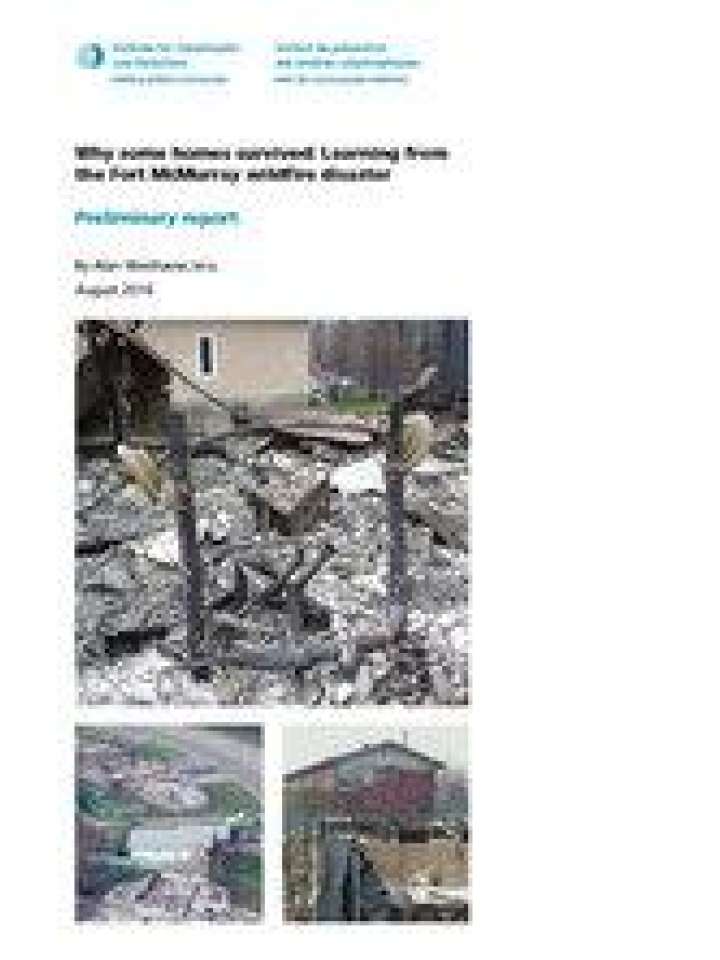Why some homes survived: Learning from the Fort McMurray wildfire disaster
This preliminary report examines, describes and interprets circumstances regarding the survival or destruction of Fort McMurray homes during the 2016 wildfires in the area. This report is intended to facilitate more fulsome deliberations among public officials regarding policy, regulations, standards, and programs affecting wildfire risk management in the wake
of the Fort McMurray fire; and to provide a stronger basis for sound decision making.
The publication also provides insights into the cause of home ignition, the effectiveness of FireSmart risk mitigations in reducing vulnerability to wildfire, and highlights trends and conclusions emerging from the broad analyses conducted to date. FireSmart guidelines are measures introduced in 2003 in Canada, which present ways to reduce wildfire risk through vegetation management, land use planning and infrastructure modifications.
The conclusions emerging from the report are the following:
- In all neighbourhoods studied, homes whose owners had adopted FireSmart guidelines survived much more frequently than homes where they had not, despite the extraordinarily harsh conditions.
- Recommended FireSmart guidelines work. They are effective in reducing the probability of home ignition and wildfire losses. Home survival does not appear to be random or a matter of luck.
Explore further
